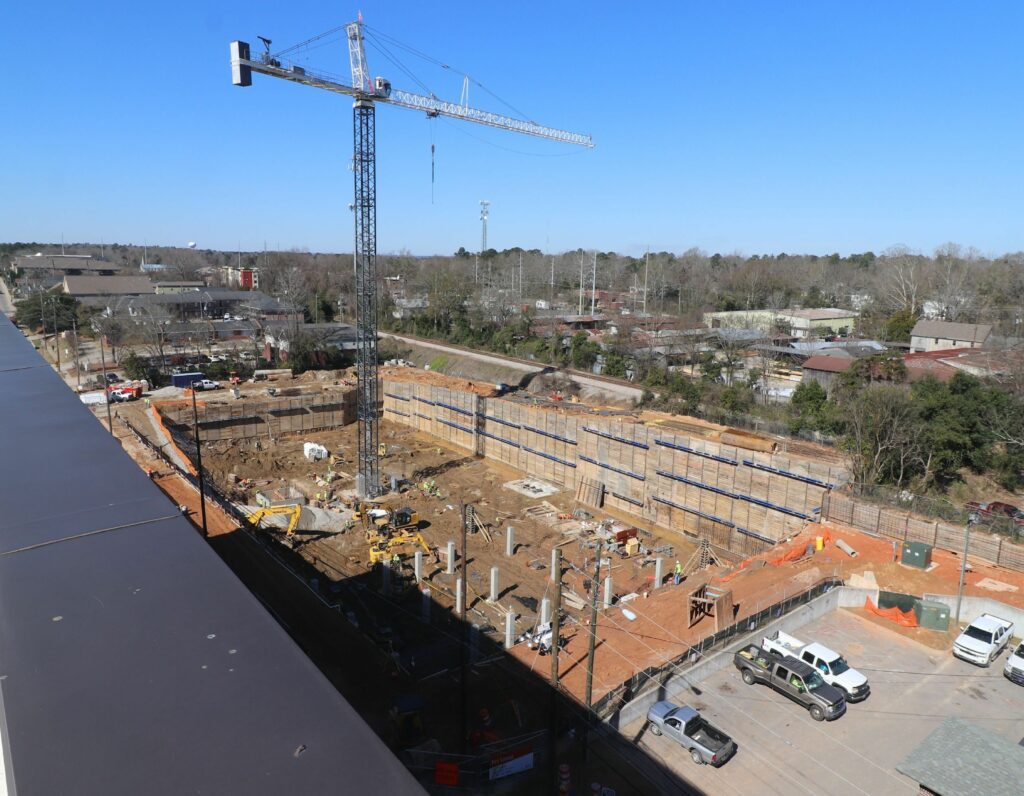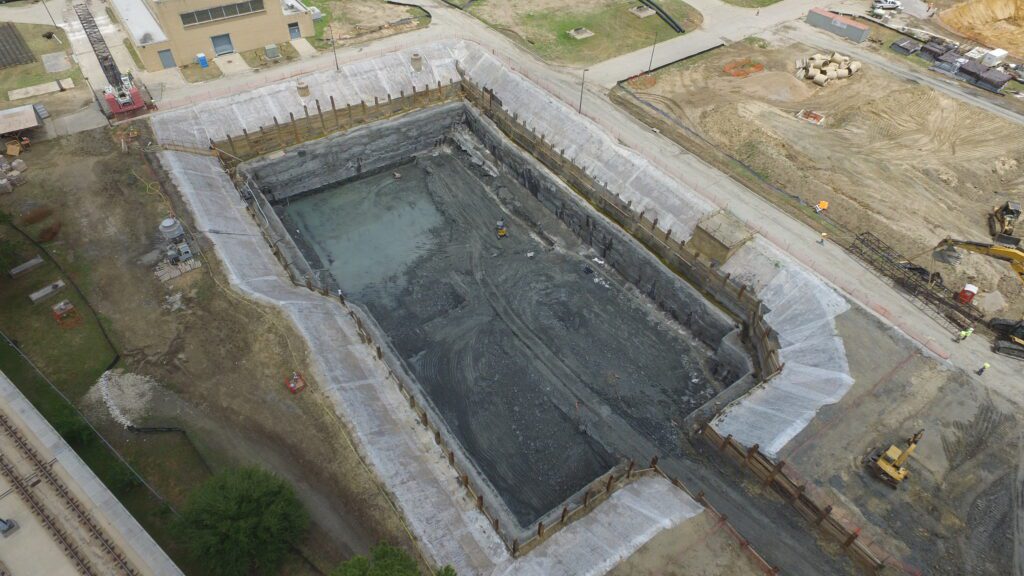
Earth Retention (Shoring) Systems are techniques used to stabilize soil and rock during the excavation process. Earth retention systems can be designed for temporary support such as during an excavation or for more permanent applications such as a basement wall.
Systems may be strictly cantilevered or may require more lateral resistance which can be addressed with the addition of tie-backs (anchors). Earth retention systems may be needed to locally stabilize an excavation or globally support a slide. In some cases, earth retention can be required to stabilize an existing wall or to support an adjacent structure before performing an excavation. Anchors can also be utilized to provide lateral support, stabilize slope failures, and resist uplift and overturning. Not sure which system you need? Russo can help.

Anchors, often referred to as tiebacks in the context of geotechnical engineering, are structural elements used to provide additional stability to retaining structures or deep excavations. They work by transferring lateral forces and preventing movement or failure of the supported structure. Anchors are commonly used in conjunction with retaining walls, slopes, or other structures that are subject to lateral earth pressures or water pressures.
Soldier piles, also known as soldier beams, are structural elements used in earth retention and excavation support systems. They are commonly employed in construction projects to provide temporary or permanent support to vertical excavations, such as trenches or foundation walls. The soldier pile and lagging system is a type of shoring system that helps to prevent soil movement and cave-ins during excavation. These can be cantilevered piles, anchored piles utilizing tiebacks, or internally braced piles utilizing structural steel braces.
Soil nails are a type of ground reinforcement technique used in geotechnical and civil engineering to provide stability to soil slopes or retain structures in excavations. This method is commonly employed to prevent landslides, stabilize slopes, and support deep excavations. Soil nails are especially useful in situations where traditional retaining structures may not be feasible or cost-effective.
Shotcrete walls refer to structural walls that are constructed using shotcrete, a method of applying concrete or mortar through a high-pressure nozzle. This technique is also known as “sprayed concrete” or “gunite.” Shotcrete is applied pneumatically, meaning it is propelled at high velocity onto a surface, creating a layer that adheres to the underlying structure. Shotcrete walls are commonly used in various construction applications, including tunneling, slope stabilization, and retaining wall construction.
Sheet piles are long, interlocking steel or reinforced concrete sections that are driven into the ground to create a continuous wall for retaining soil or preventing the seepage of water. They are commonly used in construction, civil engineering, and infrastructure projects where excavation support, slope stabilization, or waterfront structures are required.
Secant piles are a type of deep foundation element used in construction to create a retaining wall or excavation support. They are particularly employed in urban areas where space is limited, and adjacent structures need protection during deep excavations. Secant piles are constructed by installing intersecting reinforced concrete piles, forming a continuous wall that provides lateral support to the surrounding soil.
A tangent wall, in the context of geotechnical and structural engineering, typically refers to a retaining wall where the individual structural elements are constructed without intentional overlap or intersection. Unlike secant pile walls, which involve the intentional overlapping of adjacent piles, tangent walls consist of closely spaced, non-intersecting elements.
Rock bolts are structural elements used in geotechnical engineering and underground construction to provide support and reinforcement to rock masses. They are commonly employed in situations where natural rock formations need additional stabilization, such as in tunnels, mines, slopes, and rock cuts. The primary purpose of rock bolts is to enhance the overall stability of the rock mass and prevent the occurrence of rockfalls or collapses.
Anchor Block Slope Stability consists of structural blocks to provide stability and support in various engineering applications. These blocks are typically large and are designed to be placed on a pattern. An anchor or tieback is drilled through the anchor block. The block acts in reaction to the tension force from the tieback.
Cast-in-place walls, also known as in-situ walls, refer to structural walls constructed on-site using concrete poured and cured in the final location. This construction method is commonly used in various building and infrastructure projects where the walls must be custom-built on-site to fit specific dimensions and design requirements.